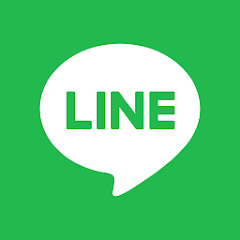❝ Benri Nihongo (BRNG.JP) is the only one providing Japanese Language Training for English Speakers in HK. ❞ ❝ I have no hesitation in highly recommending to you. ❞ Tsutomu Katayama, Director of Former Osaka Prefectural Government HK Office. ❝ Here you can enjoy learning Japanese as well as developing a sense of using Japanese. ❞ ❝ Benri Nihongo is the answer! ❞
Benri Nihongo
Complementary Japanese for Hkers & Eng Speakers in HK…
❝ Benri Nihongo (BRNG.JP) is the only one providing Japanese Language Training for English Speakers in HK. ❞ ❝ I have no hesitation in highly recommending to you. ❞ Tsutomu Katayama, Director of Former Osaka Prefectural Government HK Office. ❝ Here you can enjoy learning Japanese as well as developing a sense of using Japanese. ❞ ❝ Benri Nihongo is the answer! ❞
Welcome sign-up and enquiry! 😀
JLPT
The Organizer
The Japanese-Language Proficiency Test (Japanese: 日本語能力試験), or JLPT, is a standardized test to evaluate and certify the Japanese proficiency of the non-native Japanese speakers. 💬 The test is organized by The Japan Foundation of the Ministry of Foreign Affairs of Japan and Japan Educational Exchanges and Services. Therefore, the scores examinees have got in JLPT are recognized worldwide, especially in the academic field. In Hong Kong, many university students whose major are Japanese will sit for this test. Since 1984, Society of Japanese Language Education of Hong Kong has been working for the Japan Foundation to organize JLPT in Hong Kong. Nowadays (2010), the Society hosts the test twice a year and the application schedules for the test are as follows:
The First JLPT (for all Levels) will be hosted on the first Sunday in July every year. Interested candidates should submit their application from the middle to the end of March of the respective year.
JLPT in Jul and Dec are mutually independent and covering the same syllabi. Therefore sit for the JLPT accordingly.
The Second JLPT (for all Levels) will be hosted on the first Sunday in December every year. Interested candidates should submit their application from the middle of August to the end of August of the respective year.
Format & Grading
There are 5 levels of difficulty in JLPT, namely from N5 to N1 from 2010 (Heisei 22) onward. While N5 is a basic level, N1 is a professional level which is also the most demanding level. However the test formats of all these levels are the same. They are all made up of 3 sections: (1) Language Knowledge (Vocabulary / Grammar); (2) Reading Comprehension & (3) Listening. In fact all these sections are testing the comprehensiveness of use of Japanese of the examinees. On JLPT webpage you can download all levels of Official Workbooks (ver 2018, PDF & MP3) to practice.
N5
According to the authority, questions of N5 are assuming that examinees have spent at least 150 hours on attending Japanese lesson (time spent on self-revision excluded). Examinees are expected at least to understand 100 Kanji(s), 800 vocabularies and master a beginner level of grammar. Passing N5 means the examinee has the ability to:
- read and understand typical expressions and sentences written in hiragana, katakana, and basic kanji.
- listen and comprehend daily Japanese conversations that spoken slowly.
Global Pass rate 67.5% means only 67 out of 100 examinees can pass the test. The rest 33 failed. Therefore you can't depend on luck to pass the test. You have to follow Benri Nihongo's instructions: step by step building up a sound foundation & memorising things skillfuly. Several students from here after completing Beginner Course 1, got a near full marks in N5.
N4
According to the authority, questions of N4 are assuming that examinees have spent at least 300 hours on attending Japanese lesson (time spent on self-revision excluded). Examinees are expected at least to understand 300 Kanji(s), 1,500 vocabularies and master a basic level of grammar. Passing N4 means the examinee has the ability to:
- read and understand Japanese passages on familiar daily topics written in basic vocabulary and kanji.
- listen and comprehend all daily Japanese conversations that spoken slowly.
Global Pass rate 50% means only 50 out of 100 examinees can pass the test. The rest 50 failed. Therefore you can't depend on luck to pass the test. You have to follow Benri Nihongo's instructions: digesting thoroughly, generalising properly & memorising things skillfuly. Several students from here after completing Beginner Course 2, got a very satisfactory result in N4.
N3
According to the authority, questions of N3 are assuming that examinees have spent at least 450 hours on attending Japanese lesson (time spent on self-revision excluded). Examinees are expected at least to understand 650 Kanji(s), 3,800 vocabularies and master a basic level of grammar. Passing N3 means the examinee has the ability to:
- grasp summary information such as Japanese newspaper headlines.
- understand slightly difficult Japanese passages with alternative phrases.
- listen and comprehend coherent daily Japanese conversations spoken at normal speed.
Global Pass rate 48.1% means only 48 out of 100 examinees can pass the test. The rest 52 failed. Therefore you can't depend on luck to pass the test. You have to follow Benri Nihongo's instructions: differentiating vocabularies and their respective usages, memorising things skillfuly. "Natural Japanese" & "Japanese Thru Dialogues" will be covering N3 syllabus.
N2
According to the authority, questions of N2 are assuming that examinees have spent at least 600 hours on attending Japanese lesson (time spent on self-revision excluded). Examinees are expected at least to understand 1,000 Kanji(s), 10,000 vocabularies and master a professional level of grammar. Passing N2 means the examinee has the ability to:
- read and comprehend Japanese materials on a variety of topics, such as articles, commentaries and critiques in the newspapers and magazines.
- listen and comprehend spoken Japanese materials such as news reports at normal speed.
Global Pass rate 43.6% means only 43 out of 100 examinees can pass the test. The rest 57 failed. Therefore you can't depend on luck to pass the test. You have to follow Benri Nihongo's instructions: differentiating vocabularies and their respective usages..When you travel in Japan, take the initiative to speak in Japanese as the Japanese will be impressed for sure. "Intermediate Course 2 (Part 1)" will be covering N2 syllabus.
N1
According to the authority, questions of N1 are assuming that examinees have spent at least 900 hours on attending Japanese lesson (time spent on self-revision excluded). Examinees are expected at least to understand 2,000 Kanji(s), 10,000 vocabularies and master a professional level of grammar. Passing N1 means that the examinee has the ability to:
- comprehend complex and abstract Japanese materials on a variety of topics, such as newspaper editorials or critiques.
- listen and comprehend spoken Japanese materials such as conversations, news reports or lectures in detail.
Global Pass rate 39.4% means only 39 out of 100 examinees can pass the test. The rest 61 failed. Therefore you can't depend on luck to pass the test. You have to follow Benri Nihongo's instructions: reading extensively, & memorising things skillfuly. When you travel in Japan, take the initiative to speak in Japanese as the Japanese will be impressed for sure. "Intermediate Course 2 (Part 2) & Supplementary Readers" will be covering part of N1 syllabus.
Source of the statistics: https://www.jlpt.jp/e/statistics/archive.html
Suggestion
Basically, all non-native speakers of Japanese can apply for whichever level of the test. However, in order to effectively measure one's proficiency, Benri Nihongo strongly recommend all examinees sit for the test level by level (i.e. gradually from N5 to N1). Because getting a pass in a lower level is buying an insurance for the failure in the more advanced level. So many examinees (not ours) don't even understand this logic that they sit for N4 without having a pass in N5 first. Unfortunately they then failed in N4. That kind of tragedy is called “眼高手低” or in English “overestimating one’s ability makes failure”. Risking for the same level of the test next year will be their only next choice. What a pity! Maybe fail again. #(T_T)\ Therefore step by step, level by level is extremely important.




